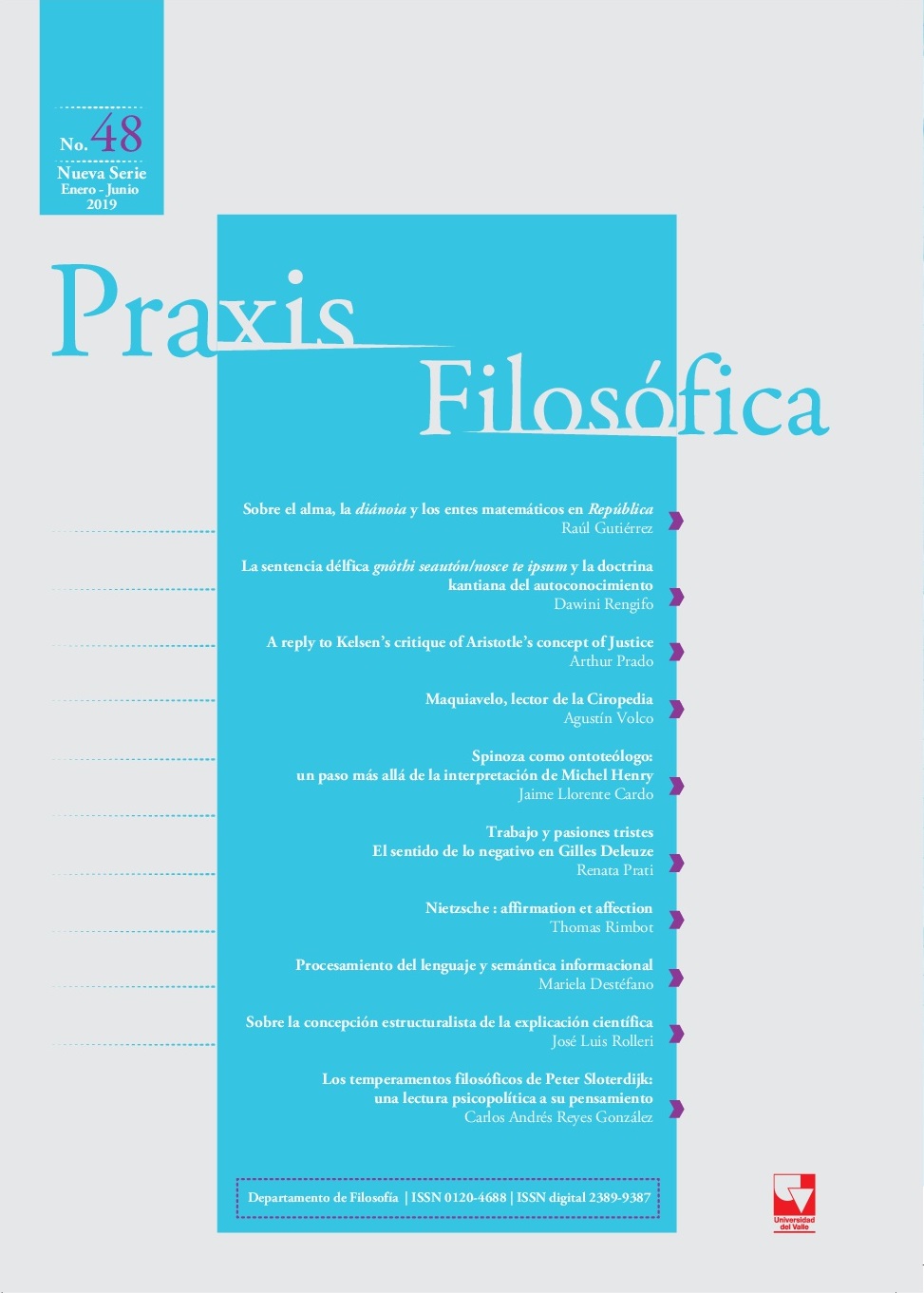On the Structuralist View of Scientific Explanation
Main Article Content
In this paper I expose the structuralist view of explanation as unification, which is based on the notion of an embedding relationship between models, in its versions by Barthelborth and Forge. In addition, they maintain some different realistic theses about the explanatory power of theories. I agree with them on the model-theoretical approach but differ of their realistic theses. First, I present some criticism to those theses, and after, from a conceptualist stance, with less ontological commitment, I introduce a thesis about certain metatheoric patterns that are part of the conceptual frameworks of physical theories, which contribute to both explanatory power and unificatory force.
- Unification
- Explanatory Power
- Metatheoric Patterns
- Realism
- Conceptualism
Bartelborth, T. (1996). Scientific Explanation. En W. Balzer y C. U. Moulines (Eds.), Structuralist Theory of Science. Focal Issues, New Results (pp. 23-43). Berlin, Alemania: de Gruyter.
Bartelborth, T. (2002). Explanatory Unification. Synthese, 130(1), 91-107.
Enderton, H. B. (2004). Una introducción matemática a la lógica (2ª. edición). Ciudad de México, México: UNAM.
Feigl, H. (1970). The ‘Orthodox’ View of Theories: Remarks in Defense as well as Critique. En M. Radner y S. Winokur (Eds.), Minnesota Studies in the Philosophy of Science (pp. 3-16). Minneapolis, USA: University of Minnesota Press.
Feynman, R., Leighton R., y Sands M., (1971). Física. (Vol. I). Ciudad de México, México: Addison-Wesley Iberoamericana.
Forge, J. (1999). Explanation, Quantity and Law. Aldershot, Inglaterra: Ashgate.
Forge, J. (2002). Reflections on Structuralism and Scientific Explanation. Synthese, 130(1), 109-121.
Friedman, M. (1974). Explanation and Scientific Understanding. The Journal of Philosophy, 71(1), 5-19.
Gould, S. J. (2004). La estructura de la teoría de la evolución. Barcelona, España: Tusquets Editores.
Hempel, C. G., y Oppenheim, P. (1948). Studies in the Logic of Explanation. Philosophy of Science, 15(2), 135-175.
Hempel, C. G. (1979). Aspectos de la explicación científica. En C. G. Hempel, La explicación científica (pp. 329-485). Buenos Aires, Argentina: Paidós.
Hempel, C. G. (1966). Philosophy of Natural Science. Englewood Cliffs, USA: Prentice-Hall.
Halonen I., e Hintikka, J. (1999). Unification – It´s Magnificent but is it Explanation? Synthese, 120(1), 27-47.
Kitcher, P. (1981). Explanatory Unification. Philosophy of Science, 48(4), 507-531.
Kitcher, P. (1989). Explanatory Unification and the Causal Structure of the World. En P. Kitcher y W. C. Salmon (Eds.), Scientific Explanation (pp. 410-505). Minneapolis, USA: University of Chicago Press.
Kitcher, P. (2001). El avance de la ciencia. Ciudad de México, México: UNAM.
Kuhn, T. S. (2004). La estructura de las revoluciones científicas (Trad. Carlos Solís). Ciudad de México, México: Fondo de Cultura Económica.
Machamer, P., Darden, L., y Craver, C. F. (2000). Thinking about Mechanisms. Philosophy of Science, 67(1), 1-25.
Mayr, E. (1992). Una larga controversia. Darwin y el darwinismo. Barcelona, España: Crítica.
Moulines, C. U. (1984). Exploraciones metacientíficas. Madrid, España: Alianza Universidad.
Moulines, C. U. (2011). El desarrollo moderno de la filosofía de la ciencia (1890-2000). Ciudad de México, México: UNAM.
Petkov, S. (2015). Explanatory unification and conceptualization. Synthese, 192, 3695-3717.
Popper, K. R. (1975). La ciencia normal y sus peligros. En I. Lakatos y A. Musgrave (Eds.), La crítica y el desarrollo del conocimiento (pp. 149-158). Barcelona, España: Grijalbo.
Quine W. v. O. (1962). Acerca de lo que hay. En M. Sacristán (Trad.), Desde un punto de vista lógico (pp. 25-47). Barcelona, España: Ariel.
Salmon, W. C. (1989). Four Decades of Scientific Explanation. En P. Kitcher y W. C. Salmon (Eds.), Scientific Explanation (pp. 3-218). Minneapolis, USA: Minnesota Studies in the Philosophy of Science.
Salmon, W. C. (1998). Causality and explanation. New York, USA: Oxford University Press.
Sneed, J. D. (1979). The Logical Structure of Mathematical Physics (2a. edición). Dordrecht, Holanda: Reidel/Kluwer.
Suppe, F. (1989). The Semantic Conception of Theories and Scientific Realism. Urbana, USA: University of Illinois Press
Suppes, P. (1957). Introduction to Logic. New York, USA: Dover.
Suppes, P. (1988). Estudios de Filosofía y metodología de la ciencia (Trad. José Luis Rolleri et al.). Madrid, España: Alianza Universidad.
Tarski, A. (1953). A General Method in Proofs of Undecidability. En A. Tarski et al. (Eds.), Undecidable Theories (pp. 3-30). Amsterdam, Holanda: North-Holland.
Torretti, R. (1990). Creative Understanding. Chicago, USA: University of Chicago Press.
Van Fraassen, B. (1996). La imagen científica. Ciudad de México, México, Paidós/UNAM.
Van Fraassen, B. (2008). Scientific Representation: Paradoxes of Perspective. New York, USA: Oxford University Press.
Downloads
De acuerdo con nuestra política (Licencia Creative Commons CC BY-NC-SA 4.0) los artículos presentados y sometidos al proceso editorial en la revista Praxis Filosófica no tienen costo alguno para sus autores ni retribuciones económicas para la revista. El artículo de carácter inédito, producto de investigación o de algún proyecto que se presente a Praxis Filosófica, no podrá estar sometido a otro proceso de publicación durante el proceso que se lleve en nuestra revista.





